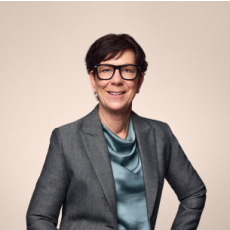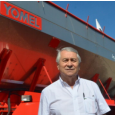What differentiates the Nordic telecom sector from other regions such as the UK, Europe, and Latin America?
One key differentiator is the long history of sustainability in the Nordic markets, particularly in Sweden. The country and its companies have been early movers in sustainability, including Telia who in 1996 appointed a Head of Environmental issues, adopted an environmental control system and started reporting environmental issues. The Nordic region also embraced digitalization early, which has been advantageous for telecom operators., For instance, Telia was the first in the world to launch 4G, and has continued to lead in technological advancements.
Additionally, the region benefits from a favorable physical climate, abundant renewable energy sources, and a cooler environment, which aids in the development of data centers. The Nordic countries are also known for their innovation, with a strong startup culture in digitalization, financial technology, and sustainability.
Retiring old networks in favour of new, more efficient networks is seeing big energy consumption savings in the telecom sector, even as network usage rises. But can providers continue to deliver ever more powerful data services, without surpassing their carbon budgets?
Telia has observed the same trend.
Despite a 40-fold increase in data usage across the Swedish network over the last decades following network technology advancements and introduction of new applications, energy consumption has continued to remain stable.
This is due to the shift from old copper-based networks to more energy-efficient technologies, like 4G and now 5G.
Telia acknowledges that energy consumption may rise over time, but we have set strict targets to minimize this increase. Energy efficiency remains a key sustainability goal, with ongoing developments aimed at reducing energy consumption in data centers, making network equipment more energy-efficient, and ensuring environmentally friendly energy-backup solutions.
Which primary energy sources power Telia’s networks?
Telia's networks are powered 100% by renewable electricity, mostly sourced through guarantees of origin. The mix of renewable energy depends on the region, including Sweden, Finland, Norway, and the Baltic countries. However, Telia still relies on some non-renewable energy, such as backup diesel fuel, though we are working on replacing this with renewable alternatives. In Estonia, for example, Telia has installed solar panels near our mobile network sites to power those with solar energy. This helps ensure renewable electricity while further developing the use of solar power in our operations.
How does the telecom sector support the decarbonization efforts of other industries?
Telecom networks can enable other industries to reduce their CO2 emissions and energy consumption. The role telecom networks play in the green digital transition is crucial. For example, we see the enablement potential of smart buildings and smart transportation as having a CO2 reduction capacity almost as large as all emissions from our entire value chain.
Can you give some examples of how telecom enables smart buildings and smart transport?
For smart transport, one example is how public transport companies equip buses with IoT sensors. These sensors can adjust the temperature inside the bus based on factors like outdoor conditions or the number of passengers. They can also provide real-time feedback to drivers to help them drive more fuel-efficiently, ultimately reducing fuel consumption and CO2 emissions.
On the smart building side, IoT sensors can be installed in residential or office buildings to optimize energy use. In a large apartment building, sensors can detect occupancy and adjust heating accordingly, while in office buildings, they can control lighting and heating based on room occupancy. These solutions make both transportation and buildings more energy-efficient and CO2-efficient.
What is Telia doing to combat e-waste?
Telia has been actively monitoring waste from its operations for many years, including network construction and maintenance, where high demands are placed on subcontractors to ensure effective recycling and reuse. The company reuses equipment, especially in its fixed network, by storing spare parts from decommissioned areas for repairs. In mobile networks, equipment from decommissioned systems, such as 3G, is sent to subcontractors for reuse. Telia has a strong recycling program, with 70% of waste from operations being recycled or reused, including construction waste, like asphalt, stone and gravel from fiber digs.
We also support our customers through initiatives like device-as-a-service for corporate clients, where old devices are returned, refurbished, and reused, promoting sustainability. Additionally, we sell refurbished phones and PCs and offer repair services in stores to extend the lifespan of devices.
Anna, you have worked in sustainability for 10 years. 2025 is the 10-year anniversary of the Paris Agreement. What do you feel is the most urgent element of your work this year?
This year, Telia's main sustainability focus is working with suppliers to ensure the sustainable production of hardware. We will collaborate with our suppliers and partners to ensure that network equipment, smartphones, and customer premise equipment are manufactured using renewable electricity and with minimized resource consumption.
For Telia, sustainability is viewed as a business question—integrating sustainability into operations to make the business more efficient and attractive to customers. The company believes that focusing on circularity and sustainability will help drive cost efficiency while also aligning with customer values, ultimately contributing to long-term business success.





